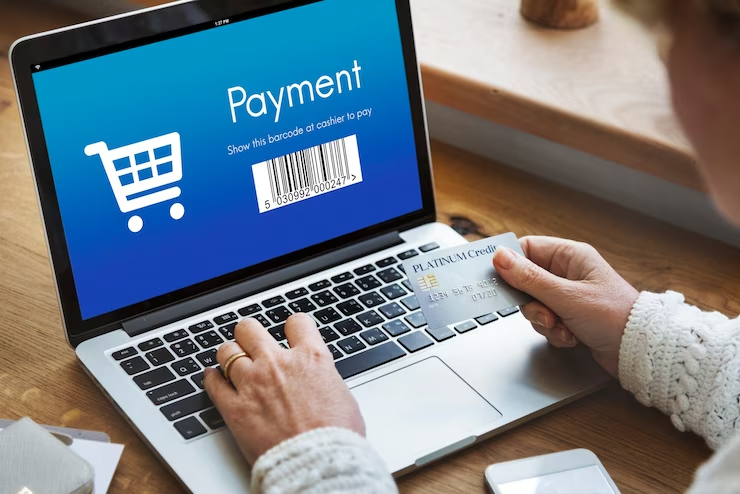
Payments fraud or scams in eCommerce is the unlawful act of using false financial or login information to purchase products or services online. Fraudsters can access a cardholder’s shop login credentials and use them to access an existing account using the cardholder’s saved payment information, or they can use stolen credit card details to make a purchase. Genuine cardholders may also submit false chargeback claims as a type of eCommerce fraud.
JOIN US FOR MORE ON:
or
or Follow us on WhatsApp Channel
Payment fraud detection software combines past and cross-platform data from many organizations to identify which clients are legitimate and which are fraudsters. Configurations may also be created for particular high-risk groups, such as niche markets or geographical areas with a greater fraud rate.
Discover How to Spot eCommerce Payments Fraud.
Recognizing the person behind a transaction is the first step to effective fraud protection. Understanding fraudsters and their methods can help merchants develop successful identification and avoidance techniques by letting them know what information to watch out for.
Let’s Get to Know the Fraudsters:
Friendly fraudsters, novice or amateur fraudsters, and sophisticated fraudsters are the three types of scammers.
Friendly Fraudsters
Friendly fraud is defined as a fraud perpetrated after a transaction by an actual customer. The scam would manifest as an unjustified chargeback started by the customer out of spite or malice.
The consumer might be attempting to get away with keeping the item for free because they have no respect for the retailer or had a bad customer service experience.
Novice or Amateur Fraudsters
On Youtube, TikTok, or the dark web, novices can learn whatever they’ll need to learn about perpetrating eCommerce fraud. As a popular DIY fraud video gets viral and a growing number of young people feel forced to ignore their better judgment and join the new social trend, popular fraud techniques sometimes develop into bandwagon fraud.
A rookie fraudster will try to place an order by pretending to be the cardholder. They want to monitor the order and finally receive it. Therefore, they will require some basic information on the cardholder. As a result, while part of the data on order will be accurate, other information may be their own, such as the fraudster’s personal email or delivery address, and some information may be arbitrarily made up.
Pro or Sophisticated Fraudsters
Skilled fraudsters will constantly try to conceal their real identity, where they are, and what they do, possibly by using a proxy, throwaway phone, site gift cards, or VOIP. They frequently create new identities and email accounts to get information on orders. Professional scammers may rent botnets to conduct fraud by doing card testing. Attack technology as a service is experiencing frightening commercial growth. Recent data breaches released a torrent of stolen login credentials onto the dark web, which sparked a significant uptick in account takeover fraud (ATO). To find the sites and people worth exploiting, sophisticated or pro-fraud rings can employ bots and rent millions of logins. The bots can be used to check the status of cards and their credit limits.
Fraudsters frequently use Reroute Fraud to obtain stolen commodities obtained through ATO fraud. They pretend to be a returning customer using a valid customer’s hacked details. Following approval of the order, they make an effort to redirect the shipment to a preferred location.
The Best Way To Stop Payment Fraud
eCommerce organizations should look for methods to enhance their customer service and whole purchasing experience to keep their customers happy. Customers will feel valued and less prone to act spitefully if you respond to their questions or complaints
immediately. Always check to make sure they can cancel or return an order so that any issues may be resolved with a refund rather than a bogus charge back.
Examining every data point in order will help you identify simple and complex fraud attacks. An effort must be made to get in touch with the actual cardholder to verify the order if any of the order information looks incorrect or insufficient. Always be on the lookout for changes in consumer behavior, brand-new email addresses, altered shipping addresses, and requests for rerouting. Every time many orders are placed
quickly after each other and show commonalities, something is wrong.
Conclusion
Being watchful and vigilant can help prevent fraud, but rejecting valid orders can also be detrimental if you have any doubts. Advanced fraud detection systems that can establish the lifespan of an email address, have IP location and device recognition capabilities, are aware of developing risks, and have a vested interest in protecting your firm are frequently the only way to discover complex fraud practices.
If the human review and investigation labor is not what you expected, consider outsourcing your fraud-related tasks to a completely automated, reliable fraud protection solution.
